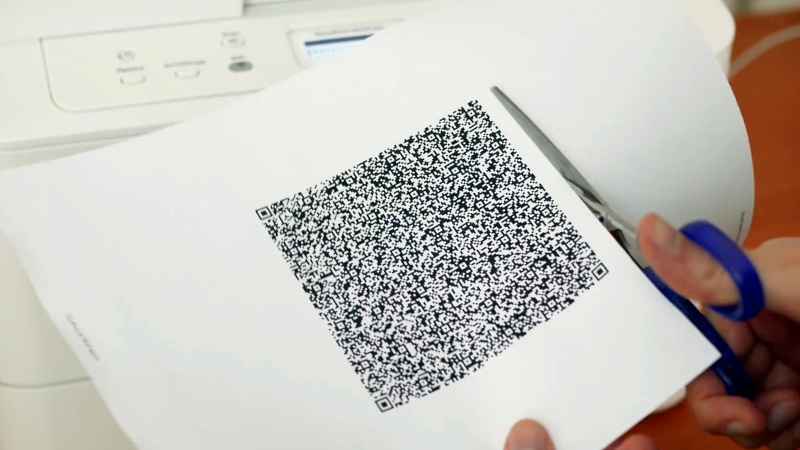QR codes are usually associated with ASCII text like URLs or serial numbers, but did you know you can also encode binary data into them? To demonstrate this concept, [MattKC] embarked on a journey to create a QR code that holds an executable version of Snake. Video after the break.
As you might expect, the version 40 QR code he ended up using is much larger than the ones you normally see. Consisting of a 171 by 171 grid, it’s the largest version that can still be read by most software. This gave [MattKC] a whopping 2,953 bytes to work with. Not a lot of space, but still bigger than some classic video games of the past.
To start, he first wrote Snake to run in a web browser using HTML, CSS, and JavaScript, which was able to fit in the available space. Modern browsers do a lot of the lifting with built-in features, and [MattKC] wanted more of a challenge, so he decided to instead create a Windows executable file. His first attempts with compiled C code were too large, which led down the rabbit trail of x86 Assembly. Here he found that his knowledge of Assembly was too limited to create a small enough program without investing months into the project. He went back to C and managed to compress his executable using Crinkler, a compressing linker commonly used in the demoscene. This shrunk the file down to 1,478 bytes.
Zbar, a command-line barcode reader for Windows was used to test the final Snake QR code. [MattKC] discovered a bug in Zbarcam that prevented it from reading binary data via a webcam input, so through the power of open source, he submitted a bug fix which is now integrated into the official release.
All the files are available for anyone to play with on [MattKC]’s website. The video below goes into a lot of detail on the entire journey. Since this project proves software can be embedded in QR codes, it means that malware could also be hidden in a QR code, if there is an exploitable bug somewhere in a smartphone QR reader app.
QR codes are an interesting tool with a variety of uses. Take a deep dive into how they work, generate a 3D printable version, or build a QR jukebox, if you want to learn more.















It can’t be long until someone does this with Doom.
it would be impossible to fit doom as even the largest size is 2953 bytes while the steam release of doom is 30,347,264 bytes. even DOOM.WAD wouldn’t fit as it is 12,408,292 bytes.
You could store Doom on a relatively small a4 size booklet though, with Paperback: http://ollydbg.de/Paperbak/
They claim 500.000 bytes per a4 page.
Not QR codes, but it is a data matrix, printable on a good quality printer and readable with a good camera or standard scanner.
Reminds me of this for the 2600: https://www.codedojo.com/?p=2251
I’m more interested in the x86 assembly source code but I must be blind because I can’t find it. Does anyone have a link?
Sure you can hide malware in binary form in a QR code, but you have to manually extract and run the file. If you find a buffer overflow in a protocol handler for VCards or similar in your QR Reader App, that would be exploitable and a serious issue.
No clue I could put binary data in a binary data format …
+00000001
It looks like the Crinkler link got mixed up, should probably point to https://github.com/runestubbe/Crinkler
Fixed, thanks!
Reminds of the Nintendo e-Reader…
I was about to say the same thing. I remember reading about the e-Reader from a pamphlet or promotional book or something, and then sitting down with a friend and trying to calculate out the maximum bits per card. At the time it didn’t even occur to me that they might do some kind of compression.
This makes me want to go back and learn more about the compression and implementation process.
This would make an interesting tattoo.
Interesting, or a T-shirt for something a little less extreme.
The PICO-8 console/game engine stores its games in a file they call a “cartridge”. That file can either be the raw binary .p8 file, or as a steganographically-encoded image file! You download a .p8.png file, and it will open up in an image viewer and appear as a screenshot of the game – but if you load it in to the P8 console, it runs the game itself!
Here’s an example – this image file *IS* the game code: https://blog.lmorchard.com/uploads/2016/poke-the-mongo/poke-the-mongo.p8.png
If you have a .gif of muliple Qr code like this and a fast scaner i think you can load much more ) ?
Good Luck trying to print a gif ;)
you just need a screen lol to display the gif